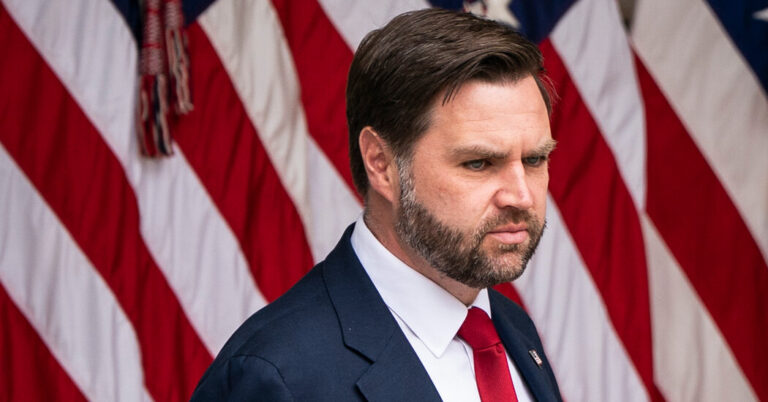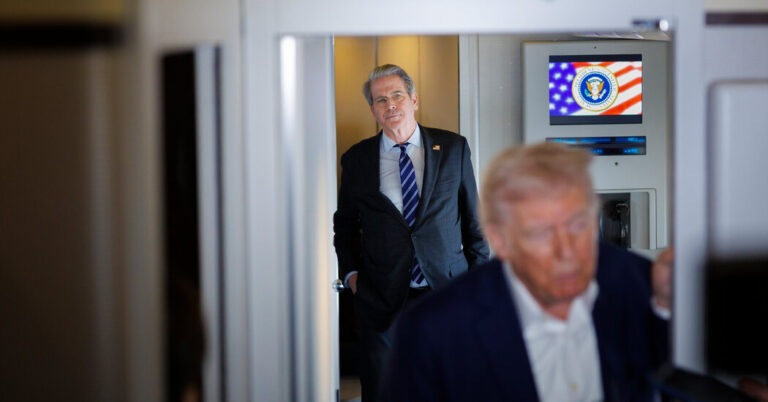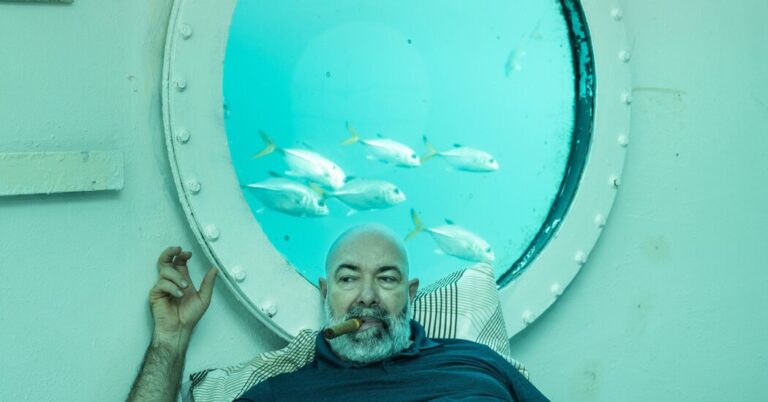Tens of thousands of immigrants who had been allowed to temporarily live and work in the United States under the Biden administration have received a seemingly unequivocal message in recent days from the Department of Homeland Security.
Leave “immediately.”
The termination notices, which started being delivered electronically last week, were more indication that migrants who followed the rules set by the last administration may be among the most vulnerable now as President Trump seeks to make good on his campaign promise of mass deportations.
Many migrants who entered the country using the CBP One app — introduced in 2023 to bring order to the chaotic influx at the southwestern border — have been told their legal status would end seven days after the date on their notice. If they failed to depart voluntarily, they would be targeted for enforcement and deported, the notices said.
“They believed they were following the right path by using the government-provided app,” said Joy Tucker, board chairwoman of Kaleidoscope Humanitarian Aid, a nonprofit organization in Tucson, Ariz.
In a twist, at least 10 immigration lawyers, most of whom are U.S. citizens, said that they, too, had received the notices urging them to depart the country, possibly because of a glitch linking their email addresses to the immigration documents of their clients.
Despite a few high-profile roundups of undocumented immigrants by federal law enforcement, the new wave of notices indicates that the bulk of “removals” by the administration is likely to come from the revocation of immigrants’ legal status, not, as Mr. Trump promised, the large-scale deportation of criminal migrants. On Monday, ahead of Mr. Trump’s meeting with the president of El Salvador, Nayib Bukele, the White House singled out about two dozen deportees by name that officials said were criminal gang members.
But noncriminal targets number in the hundreds of thousands. The latest hit came last week when the Trump administration ended temporary protections for more than 10,000 people from Afghanistan and Cameroon. That followed last month’s revocation of a Biden-era program that permitted around 500,000 people from Cuba, Haiti, Nicaragua and Venezuela to stay for two years with work permits, provided they had a financial sponsor and passed a security check. The cancellation, to go into effect on April 24, is being challenged in federal court in Boston.
On Monday afternoon, the same federal judge in Boston, Indira Talwani, moved to temporarily block the Trump administration’s planned effort to revoke the temporary status of migrants who came to the country as part of a Biden-era program.
The judge’s order will set up yet another clash with the Trump administration over its aggressive immigration policies. Many of the immigrants in Arizona, Colorado, Ohio and beyond who received departure orders have legal grounds to remain in the country, according to immigration experts.
In New York City, where 40,000 recent migrants, mostly families with children, are still being housed in dozens of city shelters, notices began arriving last week, according to an email that city officials sent shelter providers on Friday.
“We have been made aware that some clients have received emails from the Department of Homeland Security terminating their parole status seven days from now,” said the email, which redirected any legal questions the migrants might have to a city hotline.
Jethro Eisenstein, an immigration lawyer in New York, said the email was misleading.
“It says in essence, CBP One is over, time for you to leave,” he said, but many of his clients have pending asylum petitions.
In a statement, a senior official with the Department of Homeland Security said U.S. Customs and Border Protection had sent out the parole revocation notifications to the email addresses provided by immigrants, meaning that some “notices may have been sent to unintended recipients.”
“CBP is monitoring communications and will address any issues on a case-by-case basis,” the official said.
In interviews, immigration lawyers who received the parole revocation notices in error said they were puzzled and amused at first — and then worried. Mary Lynn Tedesco, a U.S. citizen and private immigration attorney in Charlotte, N.C., said she had never submitted a parole application on behalf of a client, nor had she ever privately sponsored an immigrant on parole.
Nicole Micheroni, an immigration lawyer in Boston who was born in Newton, Mass., posted her letter on social media, musing, “Does anyone know if you can get Italian citizenship through great-grandparents?” But she and other lawyers said the notice could put undue pressure on immigrant families.
“The language is very aggressive and very threatening, so I could see this email causing a lot of panic and concern to people, whether they are citizens or here on parole or here legally in any other way,” Ms. Micheroni said.
Billy Husher Jr., another U.S. citizen and lawyer who received the notice, said that it was “just a mass email and not any kind of individualized determination.” Mr. Husher, a senior associate at Costas Law Firm in Independence, Ohio, added, “This makes me believe that it’s just a scare tactic to make people give up their due-process rights.”
The move to terminate the status of people who used the app is part of a wider push by the Trump administration to roll back discretionary programs created by the Biden administration, which had allowed about 1.5 million people to be “paroled” into the country.
The parole status shielded immigrants from deportation and granted them employment authorization for two years.
The Homeland Security Department canceled CBP One after Mr. Trump took office, and turned it into a “self-deportation” app, CBP Home, which it hopes migrants will use to prove they have left the United States once they have departed. The administration has also effectively canceled Social Security numbers that immigrants had obtained legally to cut them off from using crucial financial services like bank accounts and credit cards and raise pressure on them to leave.
Migrants who used the CBP One app often waited months in Mexico for an appointment to present themselves at a U.S. port of entry at the southern border. After the appointment, they were typically paroled into the country with court dates for removal hearings in cities around the country. Many received work permits within weeks and later applied for asylum, hoping to win the right to remain in the country long-term.
Among those who just received the termination notice was Frantzdy Jerome, a Haitian immigrant who has been working at an Amazon warehouse near Springfield, Ohio, one of the centers of anti-immigrant fervor during the 2024 presidential campaign.
“D.H.S. is now exercising its discretion to terminate your parole,” said the notice he shared with The New York Times. The last sentence said, “Please leave the United States immediately.”
Mr. Jerome said that he had read the notice repeatedly, until concluding that he might be spared because he had a pending asylum case. One line said that enforcement actions would “result in your removal from the United States — unless you have otherwise obtained a lawful basis to remain here.”
Still, Mr. Jerome worries, he said, because his asylum request has not been approved.
Mr. Jerome said that he planned to keep reporting to work the overnight shift at Amazon, where many Haitian co-workers had received the same notice.
“I’m praying that I can stay in this country and keep working,” said Mr. Jerome, who supports 10 family members in Haiti.
“Conditions in my country are very bad,” he said.
The notices have caused confusion not only for families, said Kathleen Bush-Joseph, a policy analyst at the Migration Policy Institute, “but also for employers trying to figure out if they have to fire people whose work permits expire.”
The work permits normally go with the expiration of protected status. If a migrant has an asylum application, then that person should be able to remain employed, but nothing is clear.
In Denver, Morgain Sanchez, a middle-school teacher, said the families of many of her Venezuelan students had received notices and were panicked.
“They don’t know what they will do,” Ms. Sanchez said.
Luis Ferré-Sadurní contributed reporting from New York.












